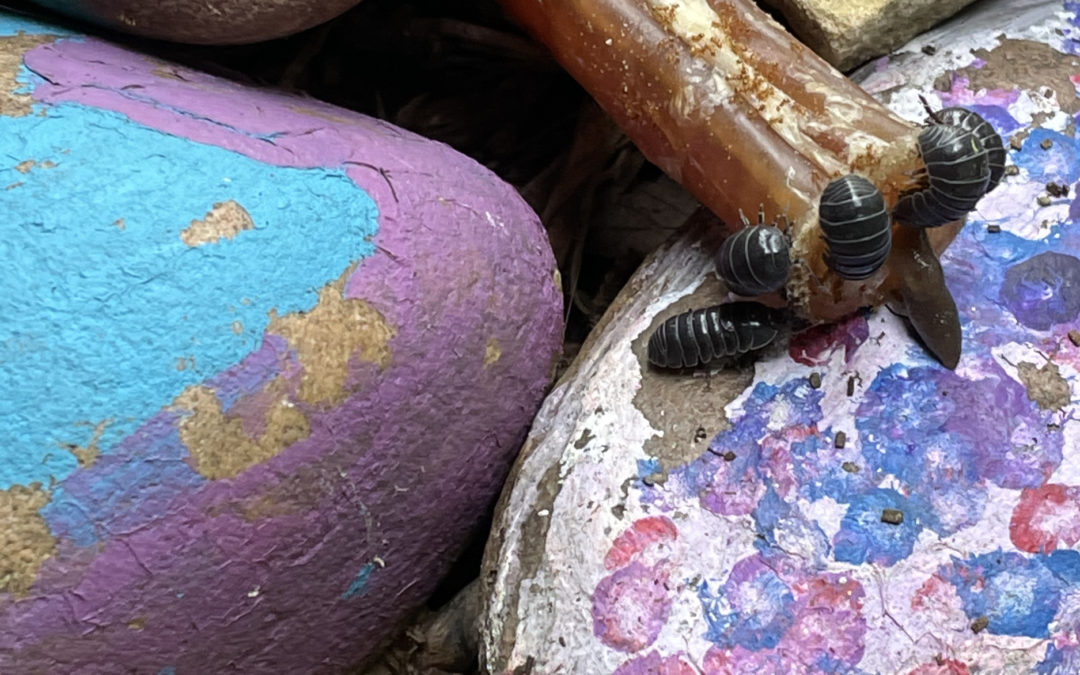Okay, I’ll tell you why in a minute, but let me tell you what I found out about doodlebugs (or roly-poly to some) when I checked just this morning.
First off, they’re NOT bugs. They are terrestrial crustaceans! Who knew?!
They have seven sets of legs and a hard outer shell; and the ability to roll themselves into a perfectly shaped ball when threatened.
Their scientific name is Armadillidium vulgare. It almost sounds cute, but not really. They’re more closely related to lobsters, crabs, and shrimp than to beetles or butterflies.
They have unusual bodily functions.
Wait, first of all, who got paid to find out what I’m about to share?!
Doodlebugs have a high tolerance for ammonia gas, so they don’t urinate. Instead, they excrete waste fluids through their shells. (So there’s the only reason I need never to pick one up. You never know when they’ve just excreted!). As for solid waste, their diet includes self-coprophagy (eating their own feces), which allows them to obtain nutrients on the “first pass-through.” Okay, one more gross thing about doodlebugs. They can drink from their mouths or tubes that jut out from their rear end. (I really debated on whether or not to share that last part. Some things you can’t unsee.)
Anyway, please tell me you’re curious! Please tell me you’re curious why I’m wrapping up this trio of blogs about curiosity with all this #($* about doodlebugs.
Great! Glad you asked.
One day recently, my 6-year-old granddaughter made an afternoon out of finding terrestrial crustaceans in our yard, building a habitat out of painted rocks and a puppy chew toy that’s gone unchewed (another story for maybe never). Anyway, my little princess was proud of all the crustaceans she’d gathered and the home she’d made for them. It was fun just watching her follow through with her project and taking such painstaking care to gather the little non-bug buggers and build them this nice little habitat for non-humanity.
When it was time to be picked up by her superior (aka Mom), she reluctantly said goodbye to us, but more reluctantly to the TCs (you know, those terrestrial crustaceans). We promised her we’d check on them before we went to bed and again when we got up the next morning. We made good on our promise. The pic above proves it!
It was a little shy of amazing (but not much shy) to watch our little “bug” invest an afternoon of curiosity and care for her project. It made me wonder what is so special about these little Armadillidium vulgare to her. I was just curious about her as she was curious about the doodlebugs (I like typing that a whole lot more than the actual words anyway).
I’m not sure she could’ve answered the question, “why are these little creatures so fun for you?” Maybe anymore than I can answer the question “why is my 6-year-old princess” so freaking cute and fun to me?!
She just is.
Curiosity raises questions. Often supplies answers, but not always.
Try asking your kids three things they’re curious about. And be sure to ask them why.
Then while you have some downtime, ask the big kid in you, “when was the last time I was curious about _______ or maybe about anything?”


